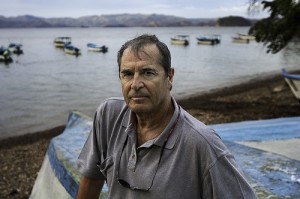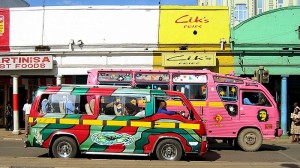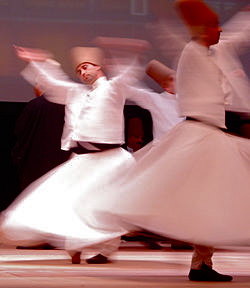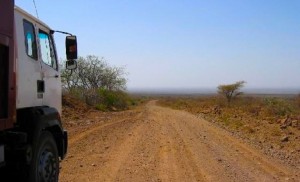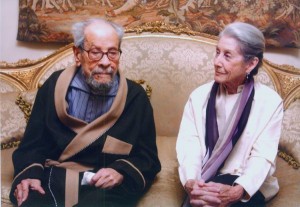Note: Having recently finished Last Train to Zona Verde (2013), which focuses on the miseries of present day life along Africa’s southwest coast from Capetown to Angola, I decided to revisit author Paul Theroux’s earlier book, Dark Star Safari (2002), written about ten years before, in which he travels along Africa’s east coast from Egypt to South Africa, through Ethiopia, Kenya, Tanzania, and other countries. Though he begins his trip full of hope, he discovers that life on Africa’s east coast, as seen here in 2002, is not what he remembered from his Peace Corps days.
“Like the person so poor and downtrodden he loses self-respect and any sense of shame, African cities did not even pretend to be anything except large slums. Once, each city had a distinct look: Nairobi had a stucco and tile-roof style of architecture, Kampala had its harmonious hills, Dar es Salaam was coastal colonial, with thick-walled buildings designed to be cool in the heat. Such particularities gave a city atmosphere and an appearance of order in which hope was not wholly absent. Now, one city was much like another, because a slum is a slum.”—Paul Theroux, 2002.
 In this book from 2002, Theroux returns to Africa, forty years after he was a Peace Corps volunteer in Malawi and a teacher in Uganda, leaving the country just as Idi Amin came to power. Despite the political upheavals of the 1960’s, his memories of Africa during this time are good ones, however. Now, approaching his sixtieth birthday, he is determined to travel from Cairo to Cape Town, believing that the continent “contain[s] many untold tales and some hope and comedy and sweetness, too,” and that there is “more to Africa than misery and terror,” something he aims to discover as he “wander[s] the antique hinterland.”
In this book from 2002, Theroux returns to Africa, forty years after he was a Peace Corps volunteer in Malawi and a teacher in Uganda, leaving the country just as Idi Amin came to power. Despite the political upheavals of the 1960’s, his memories of Africa during this time are good ones, however. Now, approaching his sixtieth birthday, he is determined to travel from Cairo to Cape Town, believing that the continent “contain[s] many untold tales and some hope and comedy and sweetness, too,” and that there is “more to Africa than misery and terror,” something he aims to discover as he “wander[s] the antique hinterland.”
Traveling alone and using the same sort of transportation as that used by the typical resident of each country he is visiting, Theroux makes the five thousand mile journey by taxi, cattle truck, “chicken bus,” bush train, matatu, rental car, ferry, and even dugout canoe. Wanting to blend in as much as possible wherever he is, he buys clothing at secondhand stalls in public markets, carries only one small bag, and avoids the tourist destinations which give most westerners their only visions of Africa. Being a “common man” has its problems, however. Despite some pleasant moments and some fascinating encounters with unusual people, the trip is not one Theroux will ever repeat, he says, and it will certainly not inspire many imitators among the readers of this book.
Theroux’s trip incorporates vivid descriptions of his visit to the Sphinx (“one of the epiphanies of my traveling life”) in Egypt, and whirling dervishes in Sudan; a delightful character sketch of Sister Alexandra from Ethiopia, a nun who has loved; and two Ethiopian traders, a father and son, who take Theroux to the Kenyan border, becoming so fond of him that the son bursts into tears when Theroux must decline their invitation to accompany them to Uganda. For Kenya, Theroux has no kind words, however. A cattle truck driver takes him through the bandit-infested northern area of Kenya to Marsabit, the northernmost city, and when the driver expresses surprise that there is a war in Ethiopia, Theroux regards him as an “ignorant inhabitant, traveling on a hideous road in an over-heated desert, in a neglected province of one of the most corrupt and distressed and crime-ridden countries in Africa.”
Theroux finds Uganda, even after Idi Amin, to be a “tidier, better-governed place than Kenya,” though that is really no praise: everything in Kampala has changed for the worse. Tanzania is no better: “there was only decline – simple linear decrepitude, and in some villages collapse.” Upon his arrival in Lilongwe, capital of Malawi, halfway through the trip, he sums up his experiences to date: “I had been three days on the bush train from Mwanza; abused by the immigration people in Dar es Salaam; bewildered by the dreadful train to Mbeya, a filthy town where I had been overcharged at the hotel and cheated out of my bus fare; delayed by a bus that didn’t show up. Then the struggle to the Tanzanian border – where punks had tried to shake me down and the health officer wanted a bribe – before the nighttime trip through the roadblocks to Karonga, and at the long slow ride across the plateau to drizzly Mzuzu.”
When he then goes to the U.S. embassy in Malawi, he finds that an “overpaid, officious, disingenuous, blame-shifting…embassy hack” there has not made any arrangements for him to speak at schools or universities because she’s had a hectic week. He wonders, “Had she, like me, been abused, terrified, stranded, harassed, cheated, bitten, flooded, insulted, exhausted, robbed, lied to, browbeaten, poisoned, stunk up, and starved?”
Theroux puts much of the blame for the deterioration of African countries over the past forty years, during which they have become independent, on well-meaning but misguided attempts by foreign aid workers and agencies. By identifying and trying to fix problems, these agencies, he believes, prevent the countries and their citizens from having to accept the responsibility themselves. Foreign aid packages prove tempting to those in power, and much, if not most, of the funding never reaches those it is designed to help. In addition, “some governments in Africa depended on underdevelopment to survive – bad schools, poor communications, a feeble press, and ragged people. The leaders needed poverty to obtain foreign aid, needed an uneducated and passive population to keep themselves in office for decades.”
Theroux also comments about other writers in this account. While in Egypt waiting for a visa to Sudan, he visits with Nobel Prize winner Naguib Mahfouz, who has a sort of salon in Cairo. Surrounded by his admirers, they bemoan the fact that “When the [Nobel Prize] was given to Marquez, many other Latin American writers were inspired to write books and publish them. But what has happened in the Arab world [since Mahfouz]? Where is Arab literature? Nothing has happened!…Why hasn’t the rest of Arab literature achieved any recognition?…It is a conspiracy by the West!”
While in Ethiopia, he reminisces happily about the writings of Rimbaud, who lived there in the 1880’s, but writers about Kenya get short shrift: Hemingway ‘s writings are “the private fantasy of a wealthy writer bent on proving his manhood.” Isak Dinesen is a “sentimental memoirist,” and Kuki Gallman is a “mythomaniac of the present day.” Only Nadine Gordimer of South Africa, among modern writers, is praised, described here as a “national writer who transcended nationality by being true to her art, like Borges in Argentina.”
Theroux is an observant and insightful writer who has dared to take a long journey on unfamiliar and often unfriendly roads. His descriptions of his travails are so vivid the reader can experience them vicariously, from the glories of places like the Sphinx to the miseries of life in Kenya. His interviews with people in the countries he visits are perceptive and very revealing of the political and social climate of these places. He is arrogant, however, and has become cynical and misanthropic over time, and it is difficult to like and “travel with” a man who testily refuses to give a half-eaten apple to a hungry child when she begs for it through the window of his train. And when he refers to his own “safari-as-struggle,” it is difficult to take him seriously. “Being in Africa was like being on a dark star,” he concludes, in what may be the only understatement in the book.
ALSO by Paul Theroux: LAST TRAIN TO ZONA VERDE (2013) and SIR VIDIA’S SHADOW
Photos, in order: The author’s photo by Steve McCurry Studios appears on http://www.miis.edu/
The matatu is from http://afrosocialiting.wordpress.com
The photo of the whirling dervishes appears on http://en.wikipedia.org
The cattle truck on the road to Marsabit may be found on http://www.virtualtourist.com/
The wonderful photo of Nobel Prize winner Naguib Mahfouz and Nadine Gordimer, by Abdel-Hamid Eid, is from http://weekly.ahram.org.eg/
